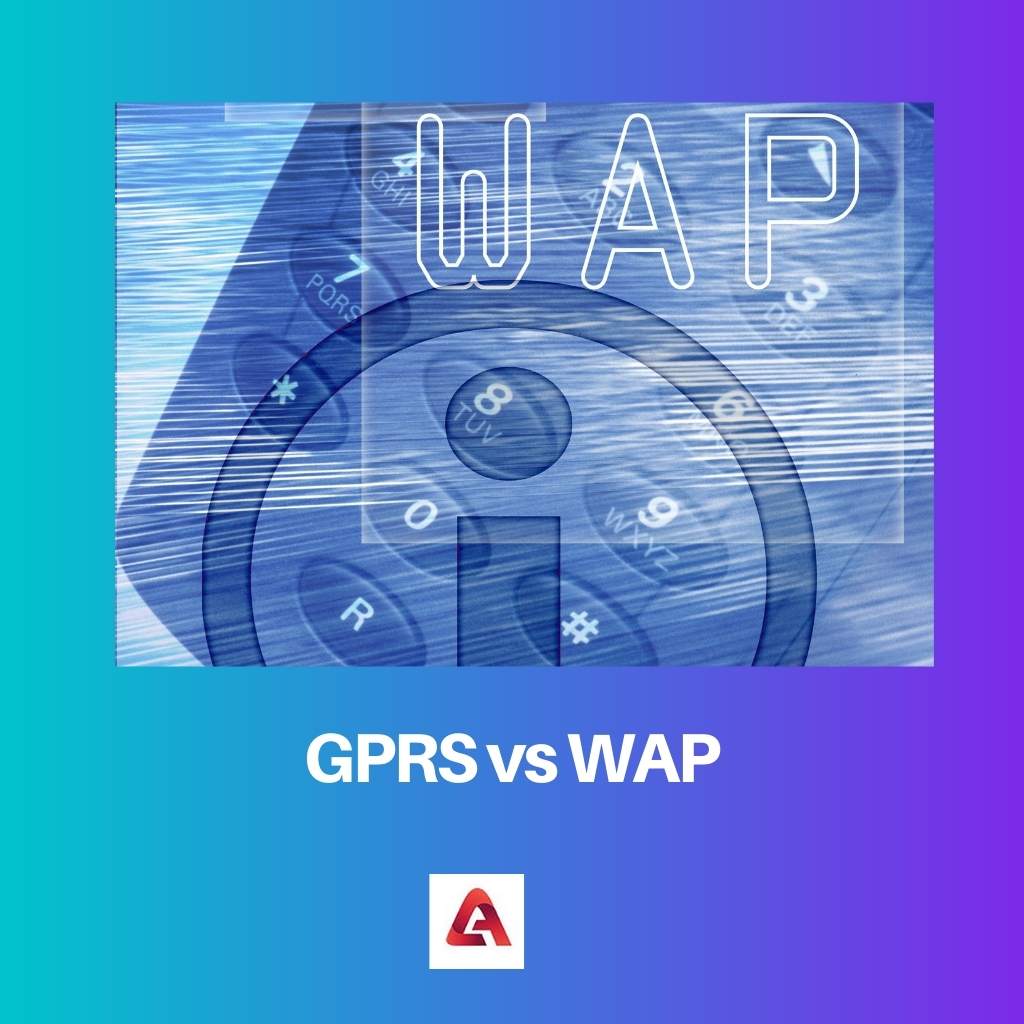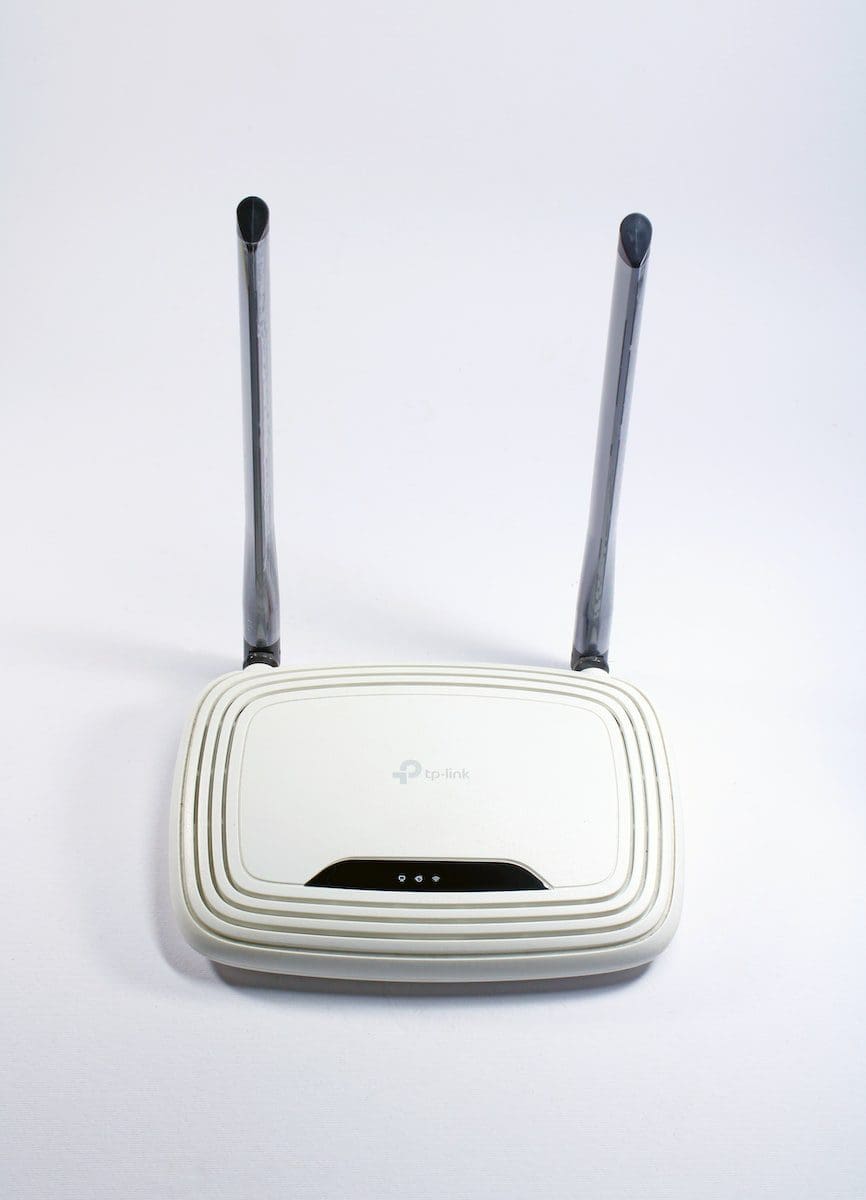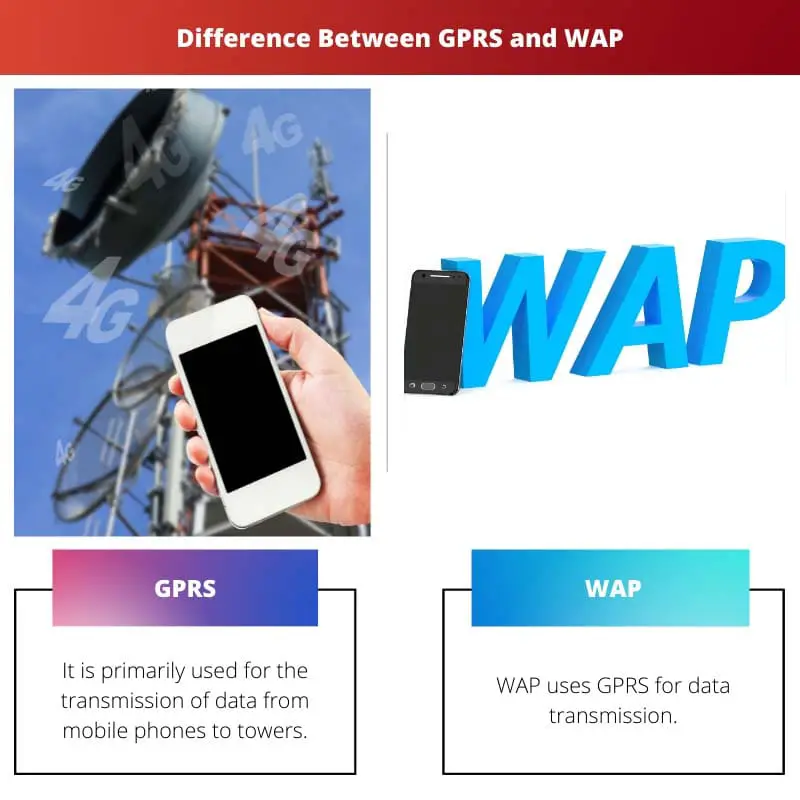Modern-day internet facility is very different from that of the past years. Technology has advanced quite a lot in these years. From being able to provide various types of servers to various types of internet access systems, modern technology has it all.
The mechanism of every system differs. GPRS was the first-ever technology developed for internet access in 2G cell phones. After that, WAP was introduced, which allowed internet browsing.
Key Takeaways
- GPRS (General Packet Radio Service) is a standard for wireless communication that allows data transfer rates between 56-114 kbps, whereas WAP (Wireless Application Protocol) is a protocol that enables access to web-based services on mobile devices.
- GPRS requires a SIM card to access the internet, while WAP can access the internet through a WAP gateway.
- GPRS is primarily used for sending and receiving data over the internet, while WAP is used for accessing web-based services such as email, social networking, and news.
GPRS vs WAP
The difference between GPRS and WAP is that GPRS is a moderate or light version of dial-up, whereas WAP is a moderate version of HTML. GPRS does not facilitate internet browsing. It can only allow the transmission of data, while WAP has an internet browsing facility. Several browsers, including WAP, use GPRS for data transmission.

GPRS, or General Packet Radio Service, is the foremost technology that was developed in 2G cell phones to facilitate receiving and sending data between the phone systems and the transmission towers.
While many other browsers use the GPRS facility, it does not support a crucial part of internet access, i.e. internet browsing.
WAP, or Wireless Application Protocol, is an internet browser technology developed to facilitate internet browsing. It uses the GPRS facility for the transmission of data. The WAP browser is very convenient to use and is user-friendly.
It seamlessly creates a light internet version for the small and old processors that do not support heavy and latest versions of the internet today.
Comparison Table
| Parameters of Comparison | GPRS | WAP |
|---|---|---|
| Release | GPRS got released in 1993. | WAP got released later in 1999. |
| Version | It is a lighter version of dial-up. | It is a lighter version of HTML. |
| Data Transmission | It is primarily used for the transmission of data from mobile phones to towers. | WAP uses GPRS for data transmission. |
| Internet Browsing | It does not have the facility of internet browsing. | WAP is used for internet browsing primarily. |
| Connection Type | It was made only for 2G and 3G connections. | It can be used in 3G connections as well as on EDGE. |
| Processor | It runs slow on weak or old processors. | It creates a lighter internet version for being compatible with the old processors. |
What is GPRS?
General Packet Radio Service (GPRS) is the first-ever mobile phone-oriented technology that was developed to facilitate data transmission between mobile phones and towers. It was implemented in 2G and 3G connections.
Although the GPRS facility is very commonly used, it does not have support for internet browsing.
The selling price of GPRS depends on the total volume of data that has been transmitted during the billing period. If one goes beyond the specified data limit of GPRS, extra charges are applied per MB, or data speed is lowered.
GPRS offers a wide range of services, including Short Message Service(SMS), Multimedia Message Service(MMS), Always-on Internet, Internet networking, Point-to-point(P2P), Point-to-multipoint(P2M) etc.
With time, GPRS has widened its features. The data speeds have improved from very low to extremely high. It has also got the application-level improved. It extends the reach of internet connection by bringing several mobile terminals all around the world together.
GPRS is said to be introduced in 1993 as the first internet technology as a standard version. Even the latest systems like LTE and UMTS use the key GPRS functions for internet access in mobile phones.

What is WAP?
Wireless Application Protocol (WAP) is an internet access technology that was introduced when the need for internet browsing came to light. It is basically a web browser for mobile phones that works on the protocol.
It came into existence in 1999 and became very popular in the early 2000s. But with time, it got replaced with newer technology.
WAP is a lighter version of HTML. It has the ability to create a comparatively easier-to-use and lighter internet version for devices with old processors that do not support the latest browsers.
The WAP browser does the primary job of internet browsing. However, it uses the GPRS facility for data transmission.
The WAP standard comes with a protocol suite that includes a few protocols under it. Wireless Application Environment (WAE), Wireless Transaction Protocol (WTP), Wireless Session Protocol (WSP), Wireless Transport Layer Security (WTLS), and Wireless Datagram Protocol (WDP) are the ones.
These protocols perform different functions. Another aspect is the WAP Push which was created in order to push the WAP content into mobile phones for convenience.
With the advancement of technology, a reworked version of WAP was introduced in 2002, which came to be known as WAP 2.0. Unlike the original WAP browser, which used WML, the 2.0 version used XHTML as its Markup Language.

Main Differences Between GPRS and WAP
- GPRS was introduced in 1993, and WAP was introduced in 1999.
- GPRS is used mainly for data transmission, while WAP uses GPRS for data transmission.
- WAP has an internet browsing facility, while GPRS does not.
- GPRS is compatible only with 2G and 3G connections, whereas WAP can also be used on EDGE.
- GPRS runs slow on old processors, while WAP creates a compatible version for the old processors.

- https://ieeexplore.ieee.org/abstract/document/1186729/
- https://ieeexplore.ieee.org/abstract/document/997453/